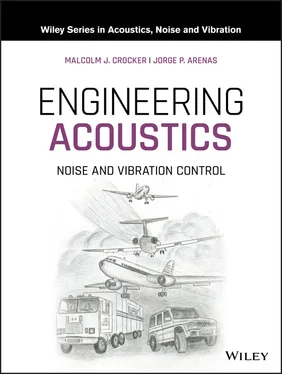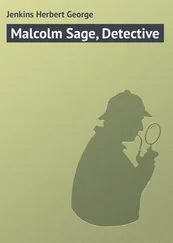For details of our global editorial offices, customer services, and more information about Wiley products visit us at www.wiley.com.
Wiley also publishes its books in a variety of electronic formats and by print‐on‐demand. Some content that appears in standard print versions of this book may not be available in other formats.
Limit of Liability/Disclaimer of Warranty In view of ongoing research, equipment modifications, changes in governmental regulations, and the constant flow of information relating to the use of experimental reagents, equipment, and devices, the reader is urged to review and evaluate the information provided in the package insert or instructions for each chemical, piece of equipment, reagent, or device for, among other things, any changes in the instructions or indication of usage and for added warnings and precautions. While the publisher and authors have used their best efforts in preparing this work, they make no representations or warranties with respect to the accuracy or completeness of the contents of this work and specifically disclaim all warranties, including without limitation any implied warranties of merchantability or fitness for a particular purpose. No warranty may be created or extended by sales representatives, written sales materials or promotional statements for this work. The fact that an organization, website, or product is referred to in this work as a citation and/or potential source of further information does not mean that the publisher and authors endorse the information or services the organization, website, or product may provide or recommendations it may make. This work is sold with the understanding that the publisher is not engaged in rendering professional services. The advice and strategies contained herein may not be suitable for your situation. You should consult with a specialist where appropriate. Further, readers should be aware that websites listed in this work may have changed or disappeared between when this work was written and when it is read. Neither the publisher nor authors shall be liable for any loss of profit or any other commercial damages, including but not limited to special, incidental, consequential, or other damages.
Library of Congress Cataloging‐in‐Publication Data
Names: Crocker, Malcolm J., author. | Arenas, Jorge P., author.
Title: Engineering acoustics : noise and vibration control / Malcolm J Crocker, Auburn University, AL, US, Jorge P Arenas, Institute of Acoustics, Univ. Austral de Chile, Valdivia, Chile.
Description: First edition. | Hoboken, NJ : John Wiley & Sons, Inc., 2021. | Series: Wiley series in acoustics noise and vibration | Includes bibliographical references and index.
Identifiers: LCCN 2020010029 (print) | LCCN 2020010030 (ebook) | ISBN 9781118496428 (hardback) | ISBN 9781118693896 (adobe pdf) | ISBN 9781118693827 (epub)
Subjects: LCSH: Acoustical engineering. | Noise control. | Damping (Mechanics)
Classification: LCC TA365 .C76 2020 (print) | LCC TA365 (ebook) | DDC 620.3/7—dc23
LC record available at https://lccn.loc.gov/2020010029LC ebook record available at https://lccn.loc.gov/2020010030
Cover Design: Wiley
Cover Illustration: created by Malcolm Crocker
Dedicated to my wife Ruth
— Malcolm J. Crocker
Dedicated to my wife Ester
—Jorge P. Arenas
This book series will embrace a wide spectrum of acoustics, noise and vibration topics from theoretical foundations to real world applications. Individual volumes included will range from specialist works of science to advanced undergraduate and graduate student texts. Books in the series will review the scientific principles of acoustics, describe special research studies and discuss solutions for noise and vibration problems in communities, industry and transportation.
The first books in the series include those on biomedical ultrasound, effects of sound on people, engineering acoustics, noise and vibration control, environmental noise management, sound intensity and wind farm noise – books on a wide variety of related topics.
The books I have edited for Wiley, Encyclopedia of Acoustics (1997), Handbook of Acoustics (1998) and Handbook of Noise and Vibration Control (2007), included over 400 chapters written by different authors. Each author had to restrict the chapter length on their special topics to no more than about 10 pages. The books in the current series will allow authors to provide much more in‐depth coverage of their topic.
The series will be of interest to senior undergraduate and graduate students, consultants, and researchers in acoustics, noise and vibration and, in particular, those involved in engineering and scientific fields, including aerospace, automotive, biomedical, civil/structural, electrical, environmental, industrial, materials, naval architecture, and mechanical systems. In addition, the books will be of interest to practitioners and researchers in fields such as audiology, architecture, the environment, physics, signal processing, and speech.
Malcolm J. Crocker Series editor
Over the past decades, the authors of this book have been working together in several areas of acoustics and vibration, which has led to a number of joint research papers published in scholarly journals and congress proceedings, as well as book chapters. Our goal in writing this book was first to cover the fundamental theory relevant to engineering acoustics, noise, and vibration, and second to describe practical ways in which noise and vibration can be controlled and reduced. Each of the sixteen chapters has several worked examples designed to make the theoretical and empirical prediction methods accessible for readers. This book is aimed at senior undergraduates, graduate students, and practitioners in the noise and vibration fields. Although the use of SI units is emphasized in the book, English units are given in addition in some cases, in particular in Chapter 13, for the convenience of readers in the USA.
The book begins with fundamentals ( Chapters 1– 3) and continues with human aspects – hearing, speech, and the effects of noise and vibration on people ( Chapters 4– 6). At this point, two chapters are included on noise measurement ( Chapters 7and 8). Chapter 9deals with principles of noise and vibration control. The remaining Chapters 10– 16deal with specific practical problems. These chapters include: acoustical design of reactive and passive mufflers and silencers ( Chapter 10), control of noise and vibration of machines ( Chapter 11), noise and vibration control in buildings ( Chapter 12), noise and vibration of air‐conditioning systems ( Chapter 13), surface transportation noise ( Chapter 14), aircraft and airport noise ( Chapter 15), and community noise and vibration ( Chapter 16).
The first author has five decades of experience in undergraduate and graduate teaching, research, and consulting in acoustics, noise, and vibration. The research was sponsored by companies and government agencies. The second author has over two decades of experience in undergraduate and graduate teaching, research, and consulting in acoustics, noise, and vibration and in performing research funded by government and private sources. He has also been a consultant with industry in noise and vibration.
Although our understanding of the acoustics, noise, and vibration fundamentals has remained largely unchanged, the last half century (1970–2020) has seen dramatic changes in our ability to make calculations, useful predictions, and measurements. Before the wide availability of electronic calculators (1975), most calculations were made using log tables and slide rules. Large, expensive computers did not appear until the 1960s and 1970s, and it was not until the early 1980s that personal computers and laptops became available. Now computers big and small are everywhere. Computational advances have revolutionized our ability to make acoustics, noise, and vibration calculations.
Читать дальше












